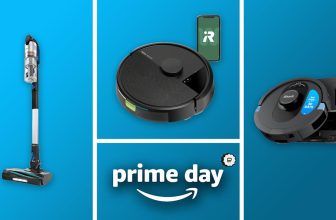It may not feel like it, but Android is officially over fifteen years old and counting. Google’s flagship mobile platform has evolved dramatically over the years, both in terms of functionality and in user interface design. Today, Android is the world’s most widely-used OS, accounting for nearly half of the globe’s operating system market share (via Statcounter).
While it’s true that Android is an OS Goliath in 2025, it still carries with it a vestigial sense of baggage stemming from its scrappier, pre-modern roots. In some ways, these reputational challenges continue to impact public perception of the platform to this very day, especially when compared to the likes of the iPhone.
A number of misconceptions, outdated realities, and outright falsities are often assumed to be true when it comes to 2025-era Android, even though they are oftentimes demonstrably inaccurate. Here are five Android myths in particular that really should’ve been left in 2012, where they rightfully belong.
Google phones run ‘stock’ Android
This hasn’t been the case since the Nexus days
Early Google phones, which were marketed under the Nexus brand name, shipped with a nearly ‘stock’ version of Android out of the box. Originally intended for use by developers, these early Nexus phones ran Android in its unadulterated Android Open Source Project (AOSP) incarnation, which sat in stark contrast to the many third-party Android skins out on the market at the time.
Fast-forward several generations, and Google doubled down on hardware with its in-house Pixel smartphone line. Despite a lingering misconception that Pixel phones run ‘stock’ or ‘vanilla’ Android, the fact of the matter is that they’re heavily customized by Google. Many Pixel features and critical system components of the experience are all proprietary, making the Pixel launcher a skin in its own right.
In fact, AOSP ‘stock’ Android itself is hardly in a usable state these days. Android in its purest form lacks native phone dialer and messenger apps, and it doesn’t include Google Play Services — the necessary plumbing needed to run the Play Store and to make use of Google-designed applications.
Android phones take awful Snaps and Insta pics
Social media apps can tap into the optics of higher-end Androids
Arguably one of the most pervasive Android stereotypes of them all, and one that continues to hold a firm grasp within popular culture, is the idea that Android camera quality is inferior to that of the iPhone.
This myth stems from the very real fact that third-party social media applications like Snapchat and Instagram never traditionally tapped into the power of any single Android phone’s camera. Instead, as a catch-all solution, they opted to display a screen capture of the viewfinder, without any post-processing, API interactions, or other optimizations.
Thankfully, this era of Android phones playing second fiddle to the iPhone for social media photography has been coming to an end for some time now. In-app picture quality is much improved on modern Pixel and Galaxy handsets, due to closer working relationships between companies to optimize the experience in the same way as it’s done on iOS.
Android phones are defined by their hardware gimmicks
Fun — albeit superfluous — gimmicks have nearly gone extinct
Back in the day, Android phone makers were adventurous. LG’s Wing had a pivoting second screen, Motorola’s Moto Z had a modular design, and HTC’s U11 was squeezable. Android also facilitated Google’s Soli motion tracking technology, the dual-screened Surface Duo from Microsoft, physical keyboard phones, and much, much more.
For better or worse, this era of OEM experimentation has died down over the past couple of years. The tried-and-true slab-style form factor has taken precedence, with most brands now conforming to the same basic handset formula designed to garner the most mainstream appeal.
On the one hand, it’s no longer accurate to deride Android as being the OS for hardware makers to “throw everything at the wall to see what sticks,” but on the other hand, it also results in a less creative mobile landscape on the whole. Even foldable Android phones, which were once novel in their approach to design, have settled into a standardized set of dimensions with a staggering degree of predictability.
Android is visually unpleasant
We aren’t living in 2010 anymore
There’s no way around it: early versions of Android were an assault on the retina. When compared to contemporary operating systems of the time, Android’s cold, calculated design language was clunky and uninviting.
Over time, this state of affairs changed. First with Google’s Tron-inspired Holo theming, then with the original Material Design, and, most recently, with the gorgeously responsive Material 3 Expressive that debuted on the recently-released Pixel 10 series.
Modern Android 16, with its expressive visuals, is genuinely stellar. Its playful animations, its responsive physics, and its consistent, colored theming engine all work together superbly, and I personally prefer the end result to that of Apple’s competing Liquid Glass visual OS design.
Android is more spec-hungry than iOS
Apple’s mobile OS isn’t as lean as it used to be
In the early 2010s, the Android side of the mobile phone industry was defined by a hardware specification arms race. OEMs would boast of ever-increasing numbers of megapixels, RAM, clock speeds, resolutions, and so on and so forth.
While this was taking place, Apple’s iPhone was coasting along with relatively less impressive internal specs, and, despite criticism from those within the tech industry, the company successfully eked out performance and efficiency metrics that were comparable to Android phones with more impressive specs on paper.
…we’ve reached a position where iPhones and Android phones both perform similarly when given roughly equivalent sets of specifications.
Many were quick to point out that Android, by virtue of being an open platform, was less optimized than iOS, the latter of which benefited from Apple’s top-down approach to both hardware and software.
Today, however, things are different: iOS is more demanding than ever before, and Android has received successive updates to target platform efficiency. With on-device AI now a part of the smartphone mix, which is notoriously RAM hungry, we’ve reached a position where iPhones and Android phones both perform similarly when given roughly equivalent sets of specifications.
Trending Products

Wireless Keyboard and Mouse Combo, ...

Lenovo New 15.6″ Laptop, Inte...

Dell Inspiron 15 3520 15.6″ F...

Acer Nitro KG241Y Sbiip 23.8” Ful...

Wireless Keyboard and Mouse Combo, ...

Zalman i3 NEO ATX Mid Tower Gaming ...

GAMDIAS ATX Mid Tower Gaming Comput...

Sceptre Curved 24-inch Gaming Monit...

Acer SH242Y Ebmihx 23.8″ FHD ...










